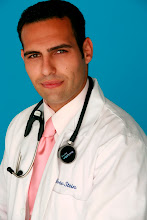Another interesting and lesser-known relationship is the jaw (frequently referred to as the TMJ) and its association with neck function, especially the upper cervical vertebrae, as well as headaches. The muscles that move the jaw/TMJ are largely innervated by the 5th cranial nerve, also called the trigeminal nerve. Several studies have found that when stimulating structures innervated by the trigeminal nerve, neck and/or jaw pain was created and vise versa. Similarly, patients with jaw problems (called temporomandibular dysfunction or, TMD) often report neck pain. When we open our mouth wide, head-neck extension always occurs followed by head-flexion when we close the jaw. Hence, the neck is always moving when we chew, yawn, talk, and clench our teeth. In fact, all of these every day activities result in jaw, head, neck motion extending from the base of the skull and first cervical vertebra (occiput-C1) and continues down through the entire cervical spine. This was investigated in a study where the relationship between neck symptoms, jaw function - specifically active mouth opening, and pressure pain sensitivity in a trigeminal nerve innervated region after a spinal manipulation was applied to the upper neck vertebrae. Here, 37 female patients with neck pain were randomly assigned to 1 of 2 groups (control and experimental) and, before and after treatment, exams of mouth opening and pressure pain levels were measured. The group receiving the upper neck manipulation showed a significant increase in active mouth opening motion as well as improved pressure pain tolerance compared to the control/non-manipulation group in a sample of woman with neck pain. This study is very important as many people suffer from neck pain, headaches and TMD. In order to properly treat these patients, one must focus on multiple regions, not just the neck area. It has been demonstrated when we bite down, there is a corresponding tightening of two important muscles in the neck and upper back region. Similarly, studies show relaxation of muscles in the neck, upper back and TMJ after spinal manipulation to the neck is applied. Injuries to the TMJ are common but often not pursued by patients as often they’ll say, “my jaw clicks and snaps but I don’t think about it much.”
If you, a friend, or a loved one are struggling with neck pain, headaches, or TMD/jaw pain, we will properly assess your condition and administer the appropriate care that is required. We also coordinate services with other health care providers when necessary. This recommendation may represent one of most significant acts of kindness you can give to those that you truly care about.

No comments:
Post a Comment